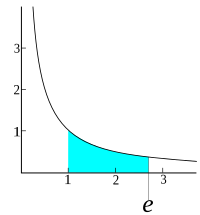
Transient receptor potential vanilloid 1 (TRPV1)-independent actions of capsaicin on cellular excitability and ion transport.
Sign Up to like & getrecommendations! Published in 2023 at "Medicinal research reviews"
DOI: 10.1002/med.21945
Abstract: Capsaicin is a naturally occurring alkaloid derived from chili pepper that is responsible for its hot pungent taste. Capsaicin is known to exert multiple pharmacological actions, including analgesia, anticancer, anti‐inflammatory, antiobesity, and antioxidant effects. The… read more here.
Keywords: transient receptor; trpv1 independent; ion; receptor ... See more keywords

Capsaicin inhibits the stemness of anaplastic thyroid carcinoma cells by triggering autophagy‐lysosome mediated OCT4A degradation
Sign Up to like & getrecommendations! Published in 2022 at "Phytotherapy Research"
DOI: 10.1002/ptr.7361
Abstract: Capsaicin (CAP) is a well‐known anti‐cancer agent. Recently, we reported capsaicin‐induced apoptosis in anaplastic thyroid cancer (ATC) cells. It is well accepted that the generation of cancer stem cells (CSCs) is responsible for the dedifferentiation… read more here.
Keywords: cap; degradation; anaplastic thyroid; capsaicin ... See more keywords

Capsaicin-Decorated Semiconducting Polymer Nanoparticles for Light-Controlled Calcium-Overload/Photodynamic Combination Therapy.
Sign Up to like & getrecommendations! Published in 2022 at "Small"
DOI: 10.1002/smll.202200152
Abstract: Calcium-overload cancer therapy has gained more and more attention owing to its good therapeutic efficacy with low side effect. However, conventional calcium-overload therapy is achieved by introducing an additional calcium element into the tumor site… read more here.
Keywords: calcium; calcium overload; semiconducting polymer; therapy ... See more keywords

Curcumin and capsaicin modulates LPS induced expression of COX-2, IL-6 and TGF-β in human peripheral blood mononuclear cells
Sign Up to like & getrecommendations! Published in 2019 at "Cytotechnology"
DOI: 10.1007/s10616-019-00338-x
Abstract: The mechanism of action of treatment of either curcumin or capsaicin or in combination on LPS (Lipopolysaccharide) induced inflammatory gene expression in peripheral blood mononuclear cells (PBMCs) was investigated using RT-PCR and in silico docking… read more here.
Keywords: capsaicin; lps induced; induced expression; cox tgf ... See more keywords

Capsaicin but not Genistein Influences Modulation of Lipid Parameters by Obestatin in DIO-C57BL/6 Mice
Sign Up to like & getrecommendations! Published in 2019 at "International Journal of Peptide Research and Therapeutics"
DOI: 10.1007/s10989-019-09811-9
Abstract: Capsaicin from chillies and genistein from soya bean have been shown to reduce cholesterol and triglyceride levels effectively. This study was done to test the hypothesis if these nutraceuticals could enhance reduction in body weight… read more here.
Keywords: reduction; capsaicin; c57bl mice; mice ... See more keywords

Capsaicin Exerts Anti-convulsant and Neuroprotective Effects in Pentylenetetrazole-Induced Seizures
Sign Up to like & getrecommendations! Published in 2020 at "Neurochemical Research"
DOI: 10.1007/s11064-020-02979-3
Abstract: The transient receptor potential vanilloid-1 (TRPV1) receptor has been implicated in the development of epileptic seizures. We examined the effect of the TRPV1 agonist capsaicin on epileptic seizures, neuronal injury and oxidative stress in a… read more here.
Keywords: capsaicin; phenytoin capsaicin; capsaicin phenytoin; capsaicin exerts ... See more keywords

Novel Agents in Neuropathic Pain, the Role of Capsaicin: Pharmacology, Efficacy, Side Effects, Different Preparations
Sign Up to like & getrecommendations! Published in 2020 at "Current Pain and Headache Reports"
DOI: 10.1007/s11916-020-00886-4
Abstract: Purpose of Review Capsaicin is a natural substance used to treat neuropathic pain because of its ability to be used in a more direct form on patients and efficiently treat their pain without the amount… read more here.
Keywords: capsaicin; treatment; pharmacology; neuropathic pain ... See more keywords

Kinetic Analysis of Vanilloid-Induced Activation in TRPV1 Channel
Sign Up to like & getrecommendations! Published in 2017 at "Biophysical Journal"
DOI: 10.1016/j.bpj.2016.11.641
Abstract: The capsaicin receptor, TRPV1 ion channel, is a polymodal nociceptor and attractive drug target. Recent advances in cryo-electron microscopy revealed the vanilloid-binding pocket in high resolution, which allowed atomic interactions mediating capsaicin binding to be… read more here.
Keywords: trpv1; capsaicin; vanilloid; capsaicin binding ... See more keywords

1H NMR studies of molecular interaction of D-glucosamine and N-acetyl-D-glucosamine with capsaicin in aqueous and non-aqueous media.
Sign Up to like & getrecommendations! Published in 2017 at "Carbohydrate research"
DOI: 10.1016/j.carres.2017.09.014
Abstract: Complex formation of D-glucosamine (Gl) and N-acetyl-D-glucosamine (AGl) with capsaicin (Cp) were studied by 1H NMR titrations in H2O-d2 and DMSO-d6; capsaicin is the major bioactive component of chili peppers. Every titration curve has been… read more here.
Keywords: capsaicin; glucosamine acetyl; glucosamine; interaction ... See more keywords

Encapsulation of hydrophobic capsaicin within the aqueous phase of water-in-oil high internal phase emulsions: Controlled release, reduced irritation, and enhanced bioaccessibility
Sign Up to like & getrecommendations! Published in 2022 at "Food Hydrocolloids"
DOI: 10.1016/j.foodhyd.2021.107184
Abstract: Abstract Capsaicin (CAP) is a hydrophobic substance with various physiological effects in chili peppers that is responsible for their perceived heat. Nonetheless, its application as a nutraceutical is hugely hindered by its low bioaccessibility and… read more here.
Keywords: phase; capsaicin; water; irritation ... See more keywords

Capsaicin inhibits sodium currents and epileptiform activity in prefrontal cortex pyramidal neurons
Sign Up to like & getrecommendations! Published in 2020 at "Neurochemistry International"
DOI: 10.1016/j.neuint.2020.104709
Abstract: Capsaicin, a compound found in chili peppers, causes burning sensations by acting on the peripheral sensory system. However, it has also been reported to exert substantial effects on central neurons. The aim of this patch-clamp… read more here.
Keywords: capsaicin; sodium currents; pyramidal neurons; sodium ... See more keywords